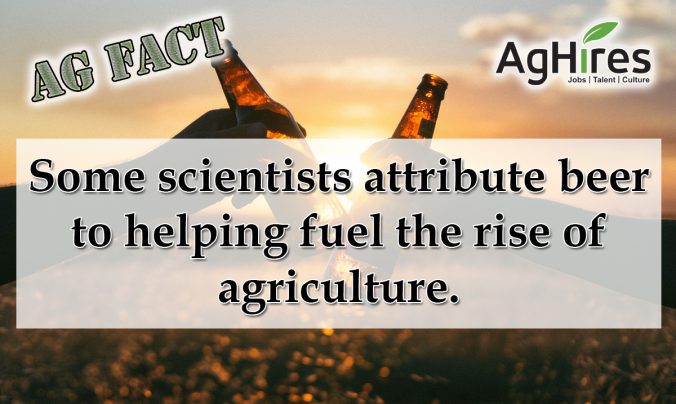
Beer has been around for thousands of years, and some researchers believe that the beverage helped fuel the rise of agriculture. Food in the Stone Age consisted of barley bread, beer, and a variety of means and grains, so it is believed that the civilization living in an eastern Mediterranean region in 13,000 B.C., known as the Natufian culture, began sowing grain seeds.
The oldest beer has been dated as far back as 3400 B.C. with evidence of brewing also dating back to the Natufians. The beverage was most likely discovered accidentally when cooks left out mashed or boiled grains long enough for the fermenting process to work.
Scientists believe this culture began harvesting, rather than hunting and gathering because they needed extra grain to produce beer, among other things. This is around the time tools used for harvesting and processing, such as sickles, baskets, and mortars started appearing.
Beer Today
Beer is mostly made from water, hops, malting barley, and yeast. With the rise of Craft Beers today, other ingredients have made their way into the brewing process. Think of fall pumpkin flavors and chocolate beers.
Over 165 million bushels of barley were produced in 2020. About three-quarters of that are used for food/malt purposes, which includes beer. The rest of the barley produced is used for livestock feed. The top states that produce barley are Idaho, Montana, and North Dakota.
Hops on the other hand are mainly grown for use in the drink. In 2019 almost 60,000 acres of hops were harvested in Washington, Oregon, Idaho, and other states.
Want more Agriculture Facts? Click here
Follow us on Facebook and Twitter to get your weekly dose of Ag Facts.
Sources:
Facts and Details
History: Did Beer Spur the Rise of Agriculture and Politics
Daily Infographic: 24 Fun Facts About Beer Infographic
Ag Marketing Resource Center
Hop Growers of America
Beer Institute






